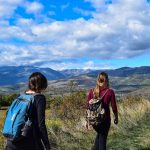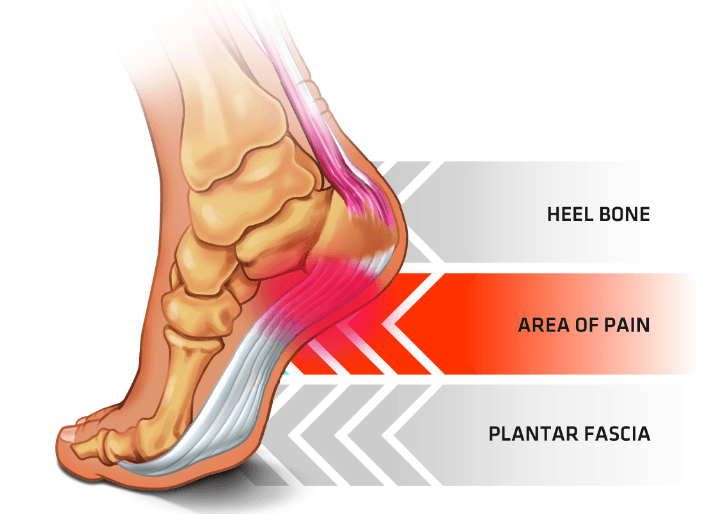5 Most Common Winter Sports Injuries and How to Prevent Them
Winter in Northern Nevada – it is a beautiful time of year and a great season to enjoy our beautiful mountains and winter sports. As chiropractors in Reno, we see our fair share of injuries around this time of year. Here are the five most common winter sport injuries we see in our practice and also tips for how to stay safe and upright while enjoying your favorite winter activities.
Skiing
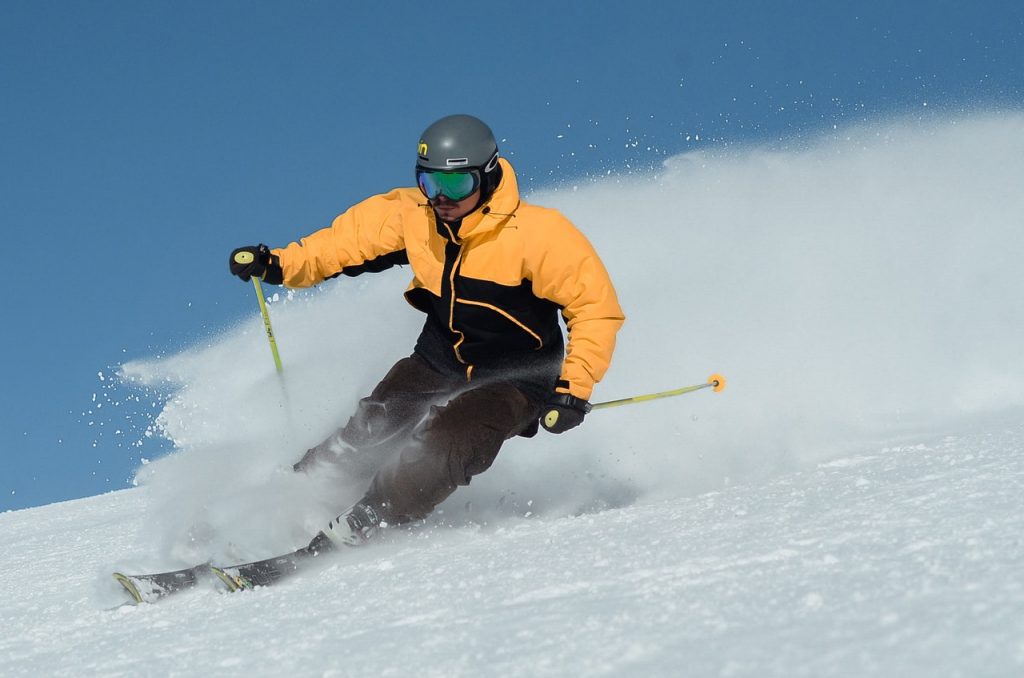 It is no secret that the Reno-Tahoe area has some of the best skiing in the country. With 16 resorts just up the hill from Reno, there is a run for every skill level. Not to mention all the backcountry skiing opportunities in our area. While skiing can result in a host of injuries, the most common ones we see are knee ligament sprains and tears and lumbar strain. Just the general motion of skiing puts a lot of stress on your knees. The ACL and MCL are the most at risk for injury when there is a great amount of pressure or strain put on them, or if they move to an unnatural angle. We also often see lumbar strain injuries. Lumbar erectors get injured due to a lack of endurance training prior to getting on the ski run.
It is no secret that the Reno-Tahoe area has some of the best skiing in the country. With 16 resorts just up the hill from Reno, there is a run for every skill level. Not to mention all the backcountry skiing opportunities in our area. While skiing can result in a host of injuries, the most common ones we see are knee ligament sprains and tears and lumbar strain. Just the general motion of skiing puts a lot of stress on your knees. The ACL and MCL are the most at risk for injury when there is a great amount of pressure or strain put on them, or if they move to an unnatural angle. We also often see lumbar strain injuries. Lumbar erectors get injured due to a lack of endurance training prior to getting on the ski run.
How to prevent knee and back injuries while skiing
Strength is your friend when it comes to ski injury prevention. The stronger your quads and buttox are, the less likely you are to put undue stress on the knees. Before and during ski season, really work on conditioning your legs by doing squats, wall sits, calf raises, and leg lifts. When you are skiing, keep your legs in tight so you can better control your range of motion. If your legs spread, that unnatural angle can create tremendous strain on your knees. Doing back strengthening exercises like Superman can really help strengthen all the muscles in your back and help prevent lumbar injuries. Also, if you do fall, stop completely, take a breath and then get up. If you try and get up too quickly while adrenaline is still racing, you can cause further or worse injury.
Snowboarding
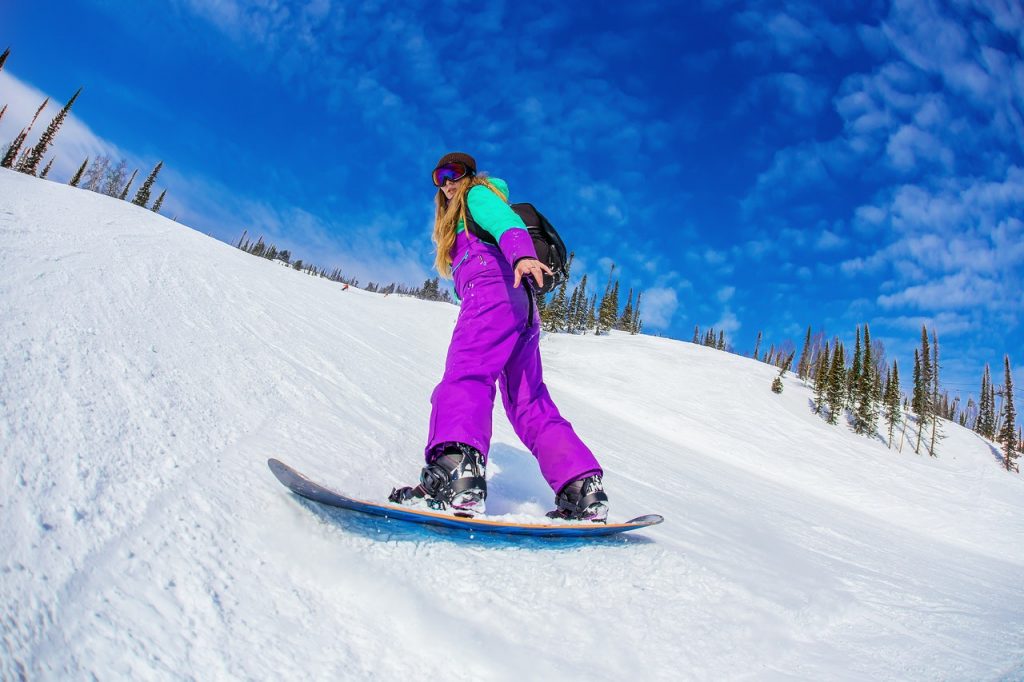 While skiing and snowboarding are close cousins, there are different muscle groups used more or less for each activity. With snowboarding, you are using your core and back muscles significantly to maintain balance and direction. With snowboarding we see more back and tailbone injuries than skiing. Your back muscles can become strained from overextension or overuse and when falling on a snowboard, it tends to be directly on your tailbone.
While skiing and snowboarding are close cousins, there are different muscle groups used more or less for each activity. With snowboarding, you are using your core and back muscles significantly to maintain balance and direction. With snowboarding we see more back and tailbone injuries than skiing. Your back muscles can become strained from overextension or overuse and when falling on a snowboard, it tends to be directly on your tailbone.
Preventing back injuries when snowboarding
As with skiing, conditioning is crucial to preventing injury. One of the best ways to support our backs is by having a strong core, or stomach muscles. By doing core exercises like sit-ups, crunches, pilates, and cris-cross, you can build strong stomach muscles that will stabilize your core. Additionally, back exercises, particularly lower back strengthening, can be very effective in injury prevention while snowboarding. Doing a few anti-rotation exercises like Russian twists or Pallof press can also be very effective.
Snowshoeing
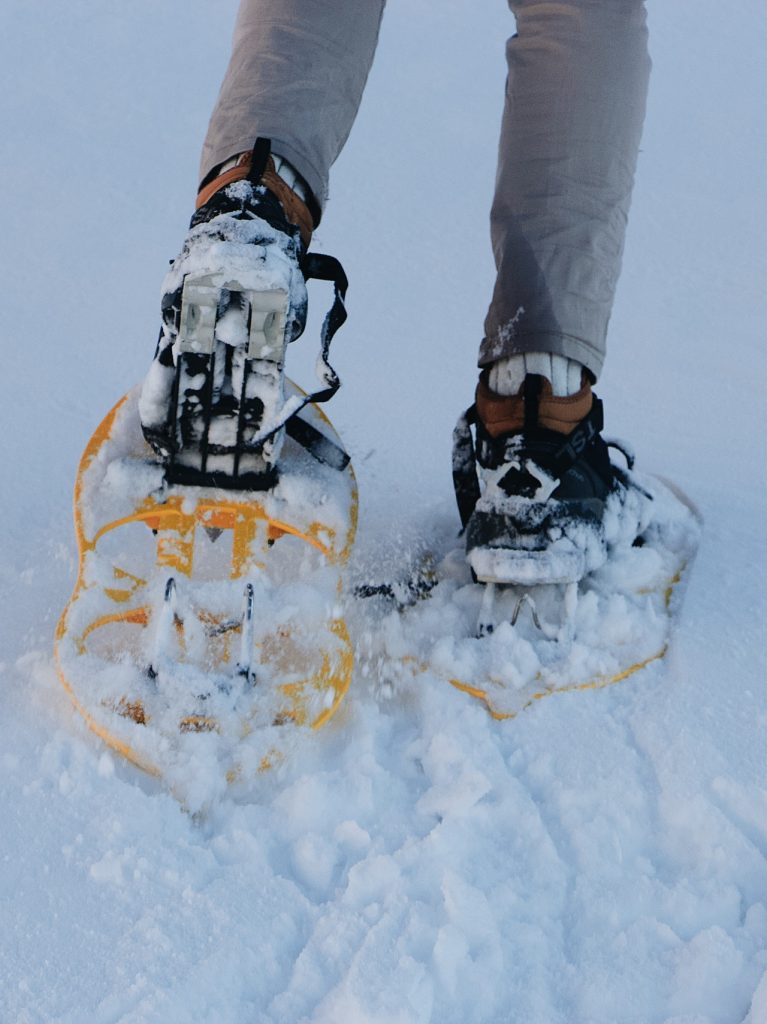 Snowshoeing is excellent exercise in the winter. It gets your heart rate up and your muscles working much like a good hike in the summer. Of all the winter sports, it is probably the safest when it comes to injury prevention. The back usually bears the most strain when snowshoeing. You are keeping an upright position while undergoing strenuous movement and that requires a lot of strength in the back muscles. Overdoing it while snowshoeing can result in strained back or shoulder muscles, or even a herniated disc. You also have to be careful about how much you are exerting. Just because you are not sweating like you would in the summer, the combination of altered difficult movement, heavy equipment, high altitude, and cold weather can cause a serious calorie burn. Dehydration and cognitive impairment can set in.
Snowshoeing is excellent exercise in the winter. It gets your heart rate up and your muscles working much like a good hike in the summer. Of all the winter sports, it is probably the safest when it comes to injury prevention. The back usually bears the most strain when snowshoeing. You are keeping an upright position while undergoing strenuous movement and that requires a lot of strength in the back muscles. Overdoing it while snowshoeing can result in strained back or shoulder muscles, or even a herniated disc. You also have to be careful about how much you are exerting. Just because you are not sweating like you would in the summer, the combination of altered difficult movement, heavy equipment, high altitude, and cold weather can cause a serious calorie burn. Dehydration and cognitive impairment can set in.
Keep your back strong to snowshoe safely
There are several exercises you can do to get and maintain a strong back. We suggest wall sits, lunges, half cobra pose, Superman, and spinal twists. Also make sure you have properly fitted equipment, specifically snowshoes that give good traction and movement, and poles that are long enough for your height. And to avoid overexertion, remember to eat small, energy-dense snacks throughout the trip, and bring the same amount of water you would on a hot summer day.
Ice Skating
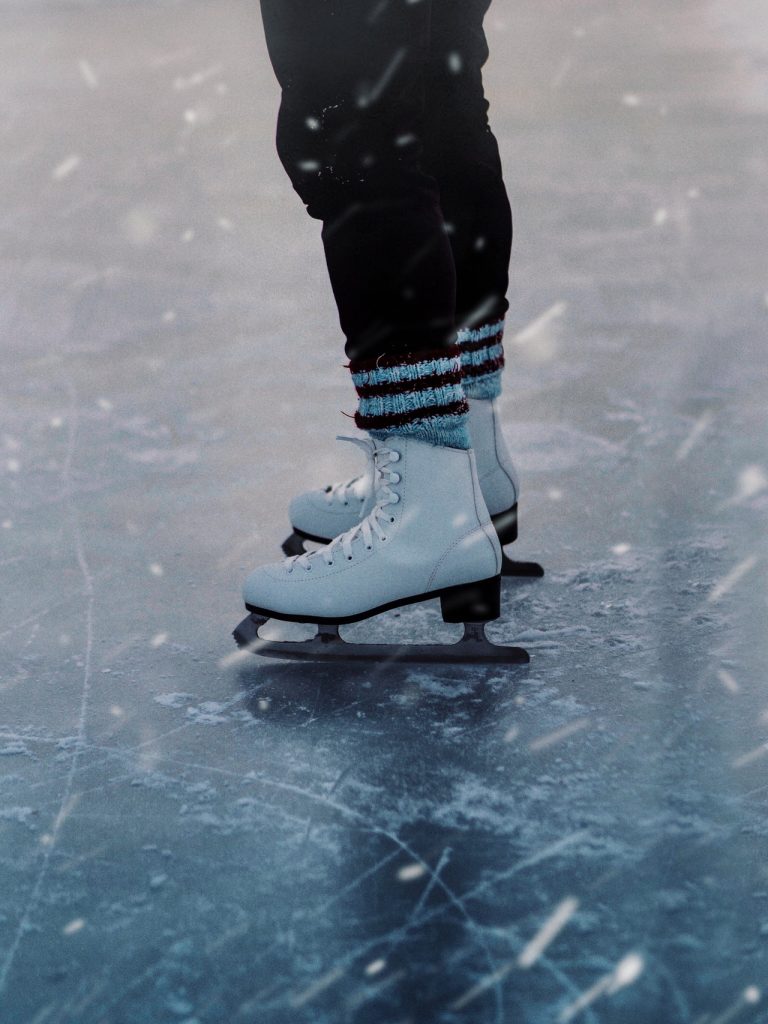 Ice skating can be a fun family activity during the winter months. However, most of us only ice skate maybe a couple times a year and so there are a lot of shaky skaters out there with high potential for injury. The most common we see is wrist and bone injury from catching oneself in a fall. At NNC, we have a digital x-ray machine in the clinic and can take imaging if a broken bone is suspected. From here, we can refer out to orthopedic specialists. If it is a wrist sprain, we can work with you on modalities for healing and strengthening the wrist after a fall on the ice.
Ice skating can be a fun family activity during the winter months. However, most of us only ice skate maybe a couple times a year and so there are a lot of shaky skaters out there with high potential for injury. The most common we see is wrist and bone injury from catching oneself in a fall. At NNC, we have a digital x-ray machine in the clinic and can take imaging if a broken bone is suspected. From here, we can refer out to orthopedic specialists. If it is a wrist sprain, we can work with you on modalities for healing and strengthening the wrist after a fall on the ice.
How to prevent a fall when ice skating
If you are unsure of your abilities on a pair of skates, stay close to the wall to grab for support in your first few rings around the ice until you get the hang of it. Also, most skate rinks have “helpers” which are walker-style devices that allow you to hang on for more support and balance while you skate. As with any sport, the more muscle you have, the better you will be at stabilizing and controlling your movements.
Sledding
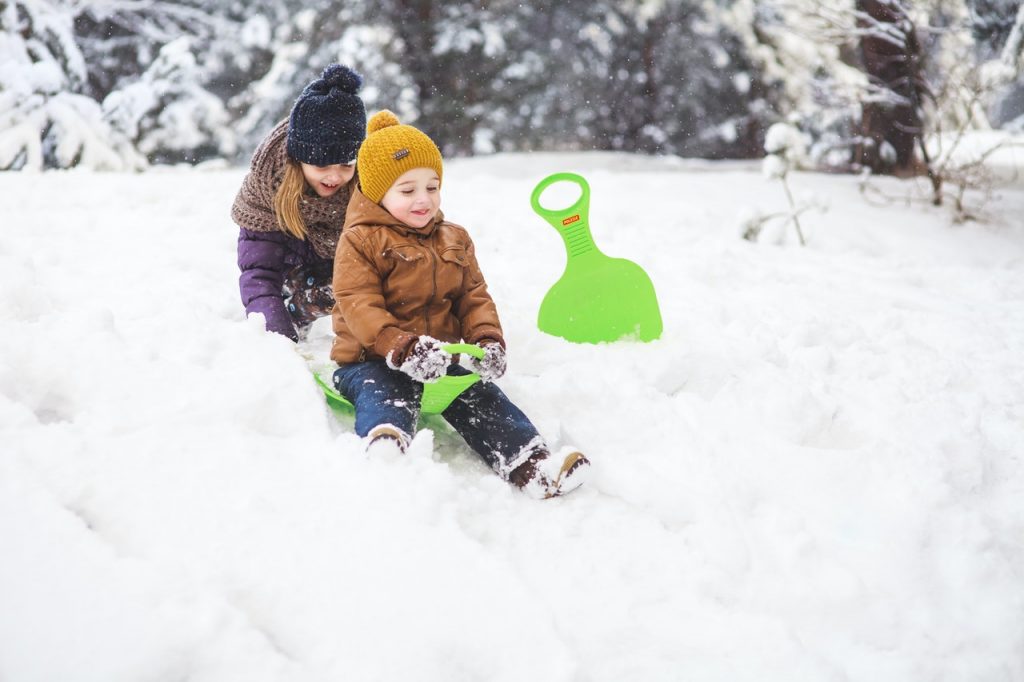 This all-time great family activity is not without its bumps and bruises – literally. The most common injuries we see from sledding are back and neck injuries. That quick whip down the hill companied with bumps along the way and potentially quick stopping are prime for whiplash and a jarred spine. And unfortunately the older the patient, the more common these injuries are.
This all-time great family activity is not without its bumps and bruises – literally. The most common injuries we see from sledding are back and neck injuries. That quick whip down the hill companied with bumps along the way and potentially quick stopping are prime for whiplash and a jarred spine. And unfortunately the older the patient, the more common these injuries are.
Sledding safely
When you evaluate your sledding hill, look for big bumps, berms, or potential washboarding (many bumps in a row from overuse of a run). If you see these, pick a different spot to go down. Try not to tense up when going down the hill. The more tense your muscles are, the more likely that you will strain or sprain a part of your back or neck. Watch out for trees or other obstacles – make sure your run is free from debris and that there is a long runway for stopping.




